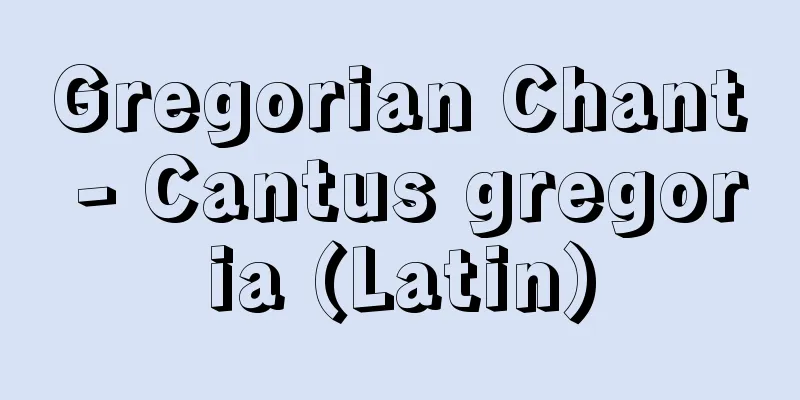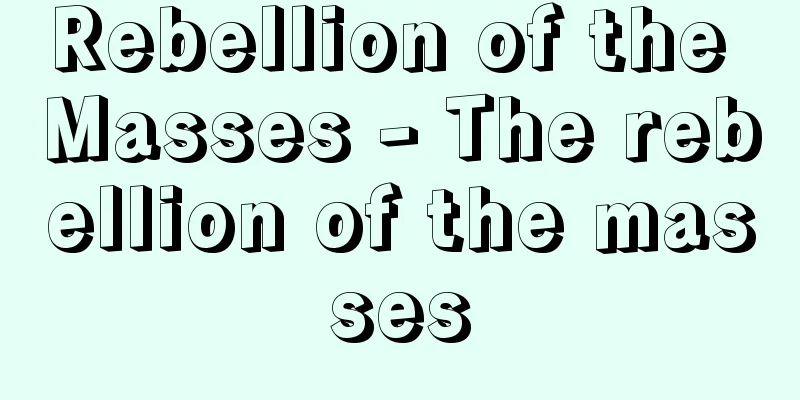Gregorian Chant - Cantus gregoria (Latin)

|
It is a monophonic chant for the liturgy of the Roman Catholic Church, music that has been sung since the Middle Ages to the present day. It is named after Pope Gregory I (reigned 590-604), who is said to have compiled this chant, but there are many unclear points about its origin. It is true that chants were sung mainly in the Roman Church from late antiquity to the early Middle Ages, and gradually took shape, but the actual chants sung at that time are not well known. The prevailing theory is that most of the chants known today as Gregorian chant were created in the Gallic-Germanic region north of the Alps around the 9th to 10th centuries. During the heyday of the Middle Ages, from the 9th to the 13th centuries, many new chants, tropes and sequences, were created in addition to the chants that had existed until then, but at the Council of Trent in the 16th century (1545-63), tropes were completely banned, and sequences were banned except for a few. Gregorian chant went into decline in the 17th and 18th centuries, but in the 19th century, a chant revival movement arose centered around the Abbey of Solesmes in France, which led to its current prosperity. Each chant is prescribed for use in a particular liturgy on a particular feast day of the Church. Musically, the chants sung in the Mass are particularly important, and are divided into ordinary chant, which in principle use the same words throughout the year, and proper chant (also called altered chant), which uses words specific to a particular feast day. Chants also play an important role in the Divine Office. The melodies of Gregorian chant are governed by a unique tone system called the church mode, which is different from the major and minor keys of modern music. The church modes are divided into eight types, each with a different final note, dominant note, and range. In principle, chants should be sung in unison without instrumental accompaniment, but sometimes an organ is used as an auxiliary accompaniment. A unique notation system called neumes is used to write chant. This system is mostly problem-free when it comes to indicating pitch, but there are differences in interpretation when it comes to indicating rhythm. There are two main theories: one that says that each neume has a distinction between long and short, and another that says that they all have the same length. The current Catholic Church adopts and practices the latter theory, advocated by the people of the Solesmes Abbey, who were at the center of the chant revival movement. [Imatani Kazunori] Source: Shogakukan Encyclopedia Nipponica About Encyclopedia Nipponica Information | Legend |
|
ローマ・カトリック教会の典礼のための単旋律による聖歌で、中世以来今日に至るまで歌われ続けてきた音楽。その名は、この聖歌を集大成したといわれる教皇グレゴリウス1世(在位590~604)にちなんでつけられているが、その成立に関してははっきりしない点が多い。古代末期から中世初期にかけて、ローマ教会を中心に聖歌が歌われ、徐々に形が整えられていったことは事実だが、そのころ歌われていた聖歌の実態はよくわからない。今日グレゴリオ聖歌の名で知られる聖歌の大部分は、9世紀から10世紀ころにかけて、アルプスの北のガリア・ゲルマン地域で成立したのではないかとする説が有力である。 中世の最盛期にあたる9世紀から13世紀にかけて、それまでの聖歌に加えて、新しい聖歌であるトロープスとセクエンツィアが多数創作されたが、16世紀のトリエント公会議(1545~63)の際、トロープスは全面的に、セクエンツィアは一部を残して禁止された。17、18世紀にはグレゴリオ聖歌の衰退期を迎えたが、19世紀に、フランスのソレム修道院を中心として聖歌復興運動がおこり、それが今日の隆盛につながっている。 各聖歌は、教会の特定の祝日における特定の典礼で使用されるように規定されている。音楽的にみてとくに重要なのは、ミサ典礼で歌われる聖歌で、原則として1年を通じて同じ歌詞を用いる通常文聖歌と、特定の祝日に固有の歌詞を用いる固有文聖歌(変化文聖歌ともいう)とに分かれる。また、聖務日課においても聖歌は重要な役割を果たしている。 グレゴリオ聖歌の旋律は、近代音楽の長調や短調とは異なる、教会旋法とよばれる独特の音組織によって律されている。教会旋法は、それぞれ終止音、属音、音域の違いによって8種類に分かれている。また聖歌は、原則的には楽器による伴奏をもたずにユニゾンで歌われるべきものだが、補助的にオルガンの伴奏が用いられることもある。 聖歌の記譜には、ネウマとよばれる独特の譜法が用いられている。これは、音程の表示に関してはほぼ問題ないが、リズムの表示に関しては解釈に相違がある。各ネウマ符はそれぞれ長短の区別をもつとする説と、それらはすべて等価の長さをもつとする説に大別できるが、現在のカトリック教会は、聖歌復興運動の中心となったソレム修道院の人々が主張する後者の説を採用して、実践している。 [今谷和徳] 出典 小学館 日本大百科全書(ニッポニカ)日本大百科全書(ニッポニカ)について 情報 | 凡例 |
<<: Gregorian calendar - Gregorian calendar
Recommend
Chest pain
Chest pain is a fairly common symptom that patien...
Semi-drying oil
This refers to fatty oils that form a dry film wh...
Total loss/partial loss - zensonbunson
Damage caused by certain accidents is compensated ...
Hiyama
Folk performing art. This is a type of Bangaku (mo...
Folk song - Ryo
One of the old names for Japanese folk songs. Sato...
The King's Saint
…After that, portraits of successive kings from K...
Charles Robert Ashbee
1863‐1942 British architect and designer. One of t...
Myotis mystacinus (English spelling) Myotismystacinus
…[Yoshiyuki Mizuko]. . . *Some of the terminology...
Baltic Fleet
The fleets of the former Russian Empire, the forme...
Tree Pangolin - Tree Climbing Pangolin
... They live in a variety of environments, from ...
Liquid Phase Sintering
...When powder or compacts (powder compressed int...
Georges Bizet
French composer. Born in Paris. Both parents were...
Uttuhegaru - Uttuhegaru
… [United Kingdom - Third Dynasty of Ur] When the...
Kyrene (English spelling)
A Greek colony (→Apoikia) on the coast of Libya in...
Alexander I - Alexander
Russian Emperor (reigned 1801-1825). Son of Paul I...









